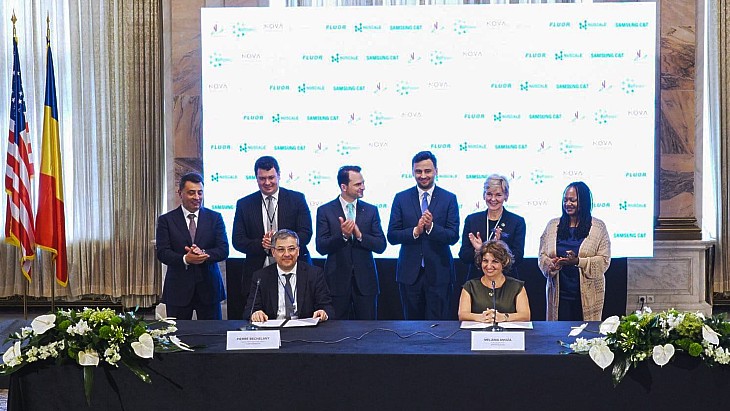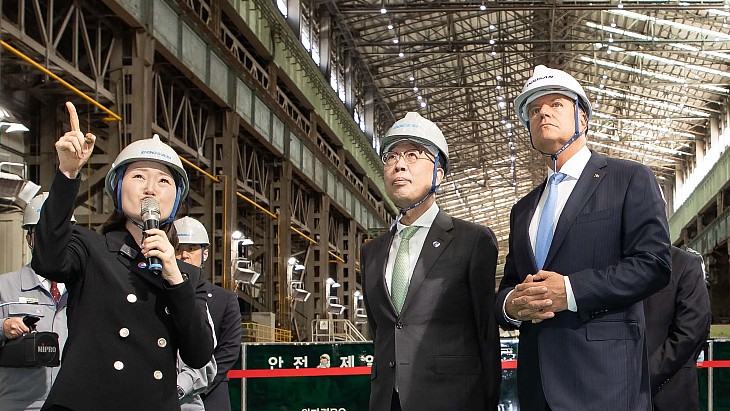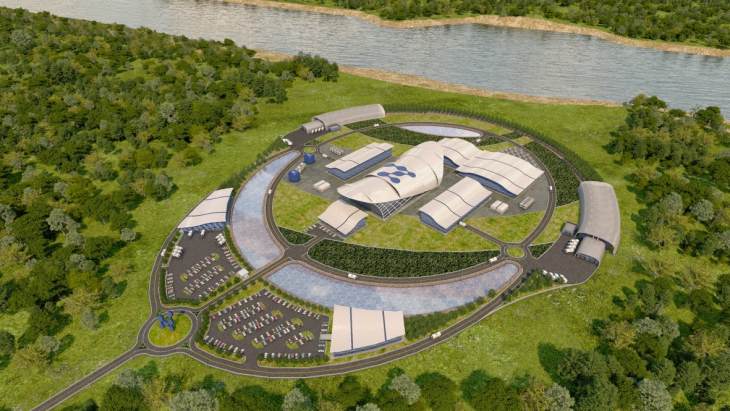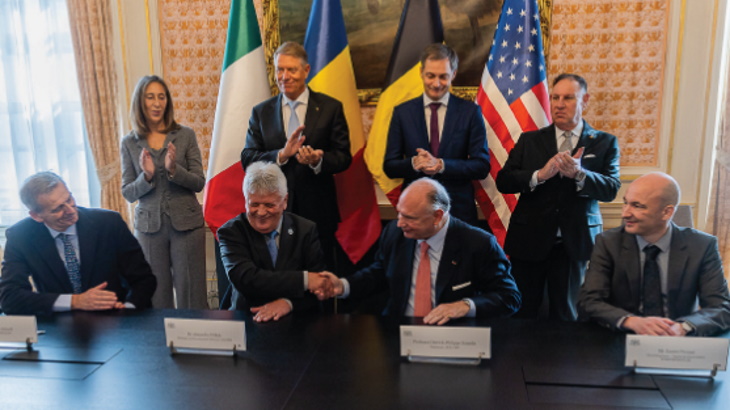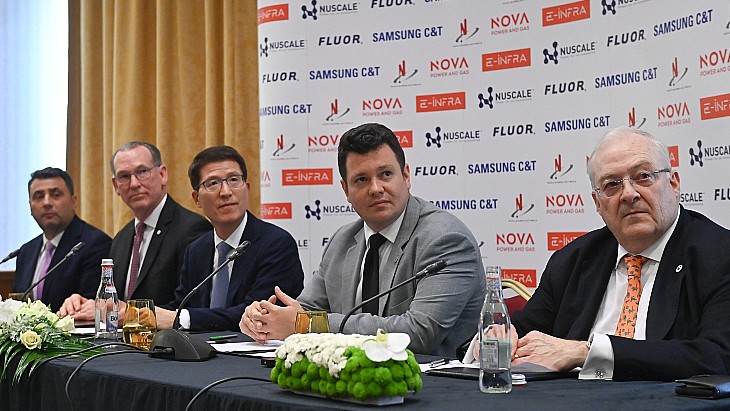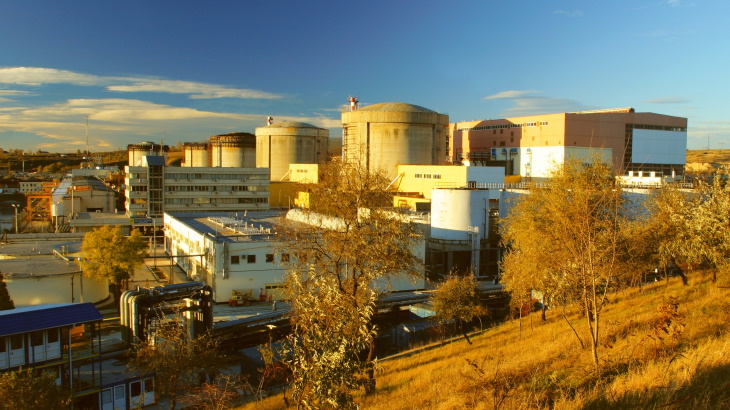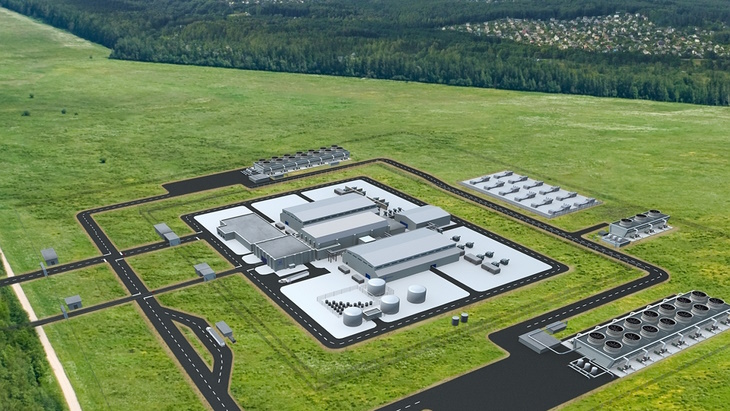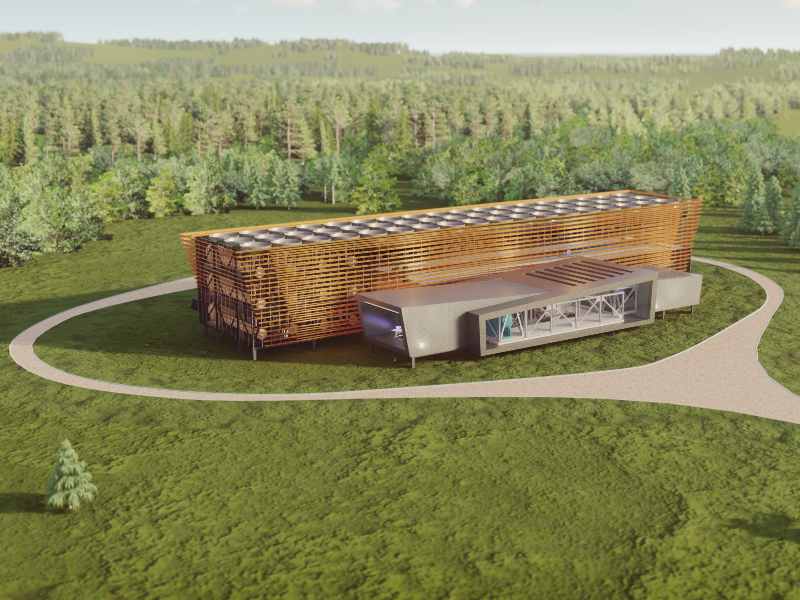 (Computer generated image of how one of Last Energy’s SMRs could look in Romania. Image: Last Energy)
(Computer generated image of how one of Last Energy’s SMRs could look in Romania. Image: Last Energy)
Small modular reactors (SMRs) offer Romania a reliable, affordable, and clean energy source, writes Mihai Darie of Last Energy.
Along the Danube-Black Sea canal lies Cernavoda, Romania’s sole nuclear power plant.
Its two units are a critical component of Romania’s energy landscape, providing roughly 20% of the country’s energy. But disruption looms for this steady energy source, as Unit 1 of the Cernavoda plant needs to be refurbished.
Refurbishing at Cernavoda will take Unit 1 offline from 2027-2029, reducing energy supply in the country and creating an urgent void that needs to be filled.
On top of this, the situation in Ukraine has flooded the European energy market with challenges. Energy supply is uncertain, which is growing more concerning as winter approaches.
This uncertainty and scarcity have, in turn, caused prices to skyrocket. Countries across Europe, including Romania, are resorting back to coal in an attempt to secure affordable energy. In fact, Environment Minister Barna Tánczos recently announced on Facebook that Romania will have to restart coalfired power plants.
This is not just a major step backwards environmentally; it also won’t address the affordability crisis long-term. Coal-powered energy is subject to the EU’s Emissions Trading System, which mandates that power companies pay for each ton of CO2 they emit.
Even if countries pivot back to coal, companies will have to buy more carbon market shares, which will ultimately drive up prices once again. These converging challenges have pushed Romania to an energy inflection point.
The country needs a reliable, affordable, and clean energy source; nuclear power is the most promising possibility. But the country needs to move quickly in order to overcome market uncertainty, secure energy independence, and fuel its economy.
Small modular reactors (SMRs) of all sizes offer the country an efficient, flexible model for addressing this urgent need.
"There are currently 437 nuclear reactors operating globally, producing about 10% of the world’s electricity."
Why nuclear energy?
Before we can understand the value of SMRs, we have to understand the value of nuclear power.
Nuclear energy has provided communities across the globe with clean, stable energy for generations.
There are currently 437 nuclear reactors operating globally, producing about 10% of the world’s electricity. Expanding this footprint will enable Romania, and other countries ready to expand their nuclear generation capacity, to tackle complex climate and energy challenges.
Here’s how.
Let’s start with the first point: nuclear energy is clean. It’s clear that we need to dramatically curb the amount of greenhouse gases released into the atmosphere to slow global warming – but energy production is the single largest contributor of greenhouse gases.
Embracing nuclear power can change this. Nuclear reactors generate power through nuclear fission, rather than burning materials that churn out carbon dioxide like coal power plants do. Cernavoda’s two reactors, for example, reduce Romania’s greenhouse gas emissions by a staggering 10 million tonnes each year.
Nuclear reactors also lend predictability and stability to a country’s energy supply. Take, as a point of comparison, other clean energy sources. For a solar panel to generate power, the sun must be shining. For a wind turbine to turn, the wind must be blowing.
That doesn’t mean we should discount their value; all clean energy sources have a key role to play in a clean, secure energy future. But countries also need power on days when the weather doesn’t cooperate.
Nuclear reactors can deliver carbon-free, baseload power for a continuous supply. Take Cernavoda’s reactors: in 2021, its two units produced power 92% of the time. Comparatively, solar’s capacity ranges from 10-25% and wind’s is 20-40%.
Lastly, nuclear energy can fuel Romania’s other sustainability ambitions and jumpstart new industries that rely on consistent supplies of clean energy. Produced cost-effectively at scale, hydrogen has the potential to become a truly clean fuel for the future, and it requires exactly the scale of electricity that nuclear can provide.
Just this summer, the European Commission authorised €149 million to support new hydrogen projects in Romania. An investment into nuclear energy will also be an investment into Romania’s growing hydrogen fuel system.
For all of these reasons, I’m a firm believer that nuclear power is a key component of our energy future.
But I also think there are ways, historically, that it has fallen short. It has taken too long to construct reactors and been too expensive to widely deploy them – until SMRs. They provide a pathway to quickly bring affordable nuclear energy to Romania.
"By comparison, large nuclear plants often take over a decade to complete. In fact, it took 14 years to build Unit 1 of the Cernavoda plant."
Why SMRs?
Several countries, Romania included, have recently announced plans to begin exploring SMR deployment.
Different countries and companies take different approaches to reactor type, megawatt output, design details or delivery model, but the overall message is clear: SMRs are gaining steam.
This is because they are purpose-built to address the industry’s historic barriers, paving the way to deploying nuclear energy at scale. To understand how, let’s pull apart the term.
Consider the first word of SMR: small. A smaller reactor requires fewer materials, less time to build, and it streamlines the development process to be as quick as possible. SMRs can take proven reactor technology, like pressurised water reactors, that have been used successfully for generations, and shrink it down.
This small design consumes less physical space. For example, to generate the same amount of energy from a nuclear plant, a wind farm would need roughly 360 times the amount of land, and a solar farm would need 75 times the amount.
SMRs using air coolant technologies add another layer of flexibility since these reactors don’t have to be close to a body of water to cool. In the end, siting flexibility means that SMRs can be developed close to demand and the end user, reducing the need for expensive transmission infrastructure.
And now to the second word: modular. The components of SMRs can be built offsite in a factory and then assembled at the nuclear plant site. Certain SMRs can be completed in as short a time as two years.
By comparison, large nuclear plants often take over a decade to complete. In fact, it took 14 years to build Unit 1 of the Cernavoda plant.
Not to mention the final construction of Units 3 and 4 of the Cernavoda plant, which was put on hold and, despite many attempts to complete the project, these units remain unfinished.
As construction times increase, so do total project costs, often delaying final construction even further. With SMRs, the principal risk of delay stems from the licensing process, not the construction process.
All these factors help keep the total cost of SMR projects low for Romania and its citizens. In some circumstances SMRs can be funded through private capital which means taxpayers won’t be on the hook to pay for expensive support schemes.
SMRs can also help make electricity affordable for the end customer since they can be built outside of existing electricity grids, requiring a smaller investment.
Nuclear energy has a critical role to play in a clean, secure energy future in Romania. But we can’t afford to get hung up on some of the traditional roadblocks, like construction delays; we need the energy sooner.
SMRs could enable Romania to bring nuclear energy to market faster and more affordably and begin combatting the converging energy and climate crises now, instead of 7, 10, or 14 years down the road.

